It’s been two years of suffering from the speakers built into my iMac. The speakers, despite all Apple’s marketing noise and even two 17 Watt power amps, suck big time. I’ve already connected my AV receiver via Bluetooth, but it’s quite a hassle to start it up every time. Another issue is that Logitech Bluetooth adapter gives a very low output level, which requires setting receiver’s volume to -20 dB every time I power it up.
And one day I’ve decided to get hold of a pair of decent standalone, compact and powered (no more amps) speakers.
I’ve test-driven a whole bunch of desktop speakers at the store, and my conclusion is that you can’t count on any decent sound experience below 200 euros. Except, maybe, Harman Kardon SoundSticks III (prices start at € 150), but I personally dislike 2.1 setups (with a subwoofer). I’m not using lowest basses to torment my neighbours, nor am I into drum’n’bass. And I don’t want an extra box under my desk either. The range of 200—300 euros is dominated by Bose, completely overpriced in my opinion. I never liked their speakers for they sound flat and unnatural. Speakers between 400 and 500 sound good, but I think it’s lame to pay this price for PC speakers.
Eventually I stumbled upon M-Audio Studiophile AV 40 studio monitors, very well acclaimed. Apart from that, I’m familiar with M-Audio gear from my past studio experience, it’s very well known and reputable.
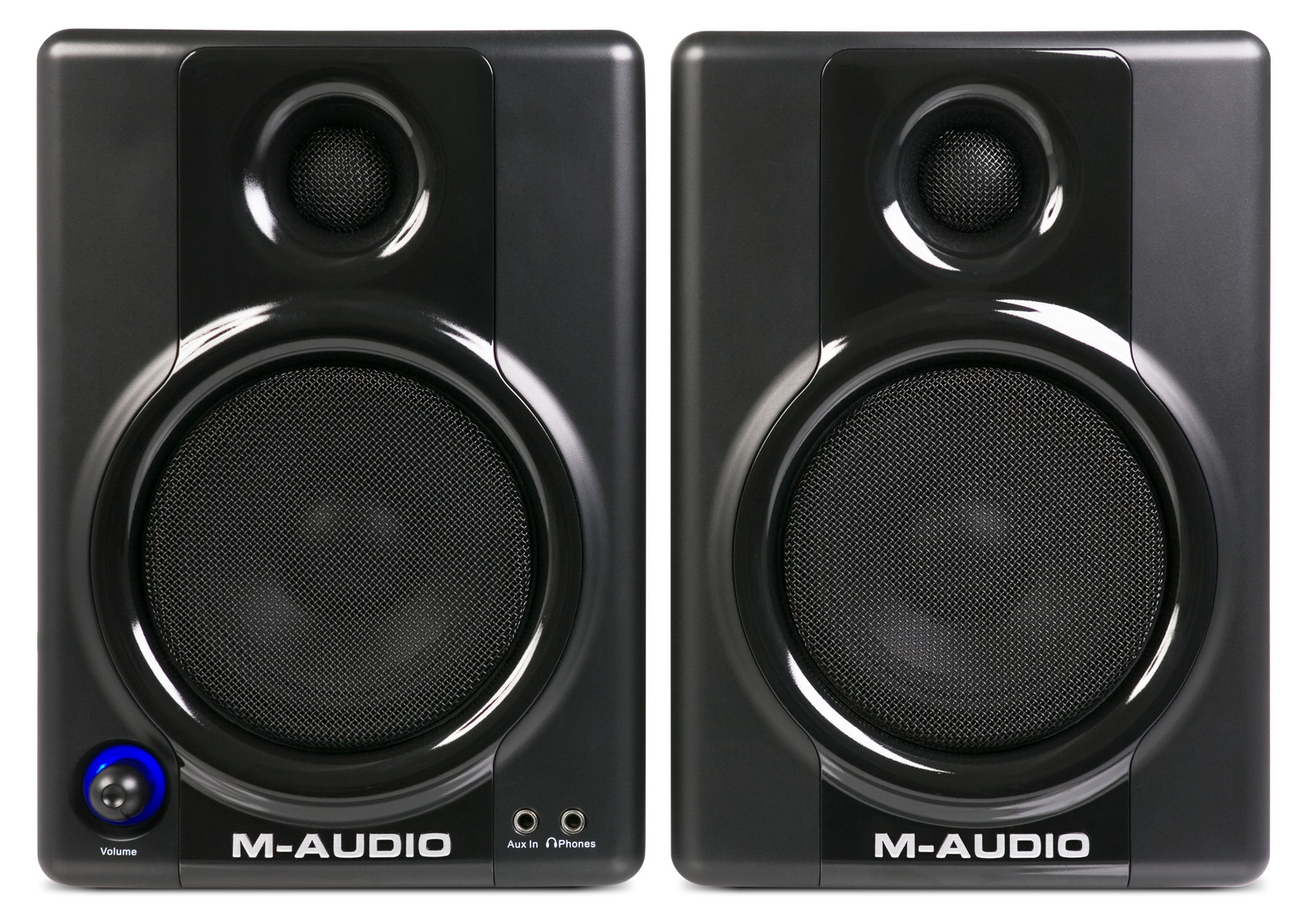
And all that at a very affordable price. I bought them from an e-store for € 109, including delivery. Their design is not a masterpiece of course, no mahogany nor dragon skin, but I don’t care for the sound is king.
The store claimed risk-free 60 days trial period, so I’ve decided to give it a try.
The order was delivered the next day, exactly as promised. The box seemed somewhat big for a pair of desktop speakers. Here it is compared with a credit card:
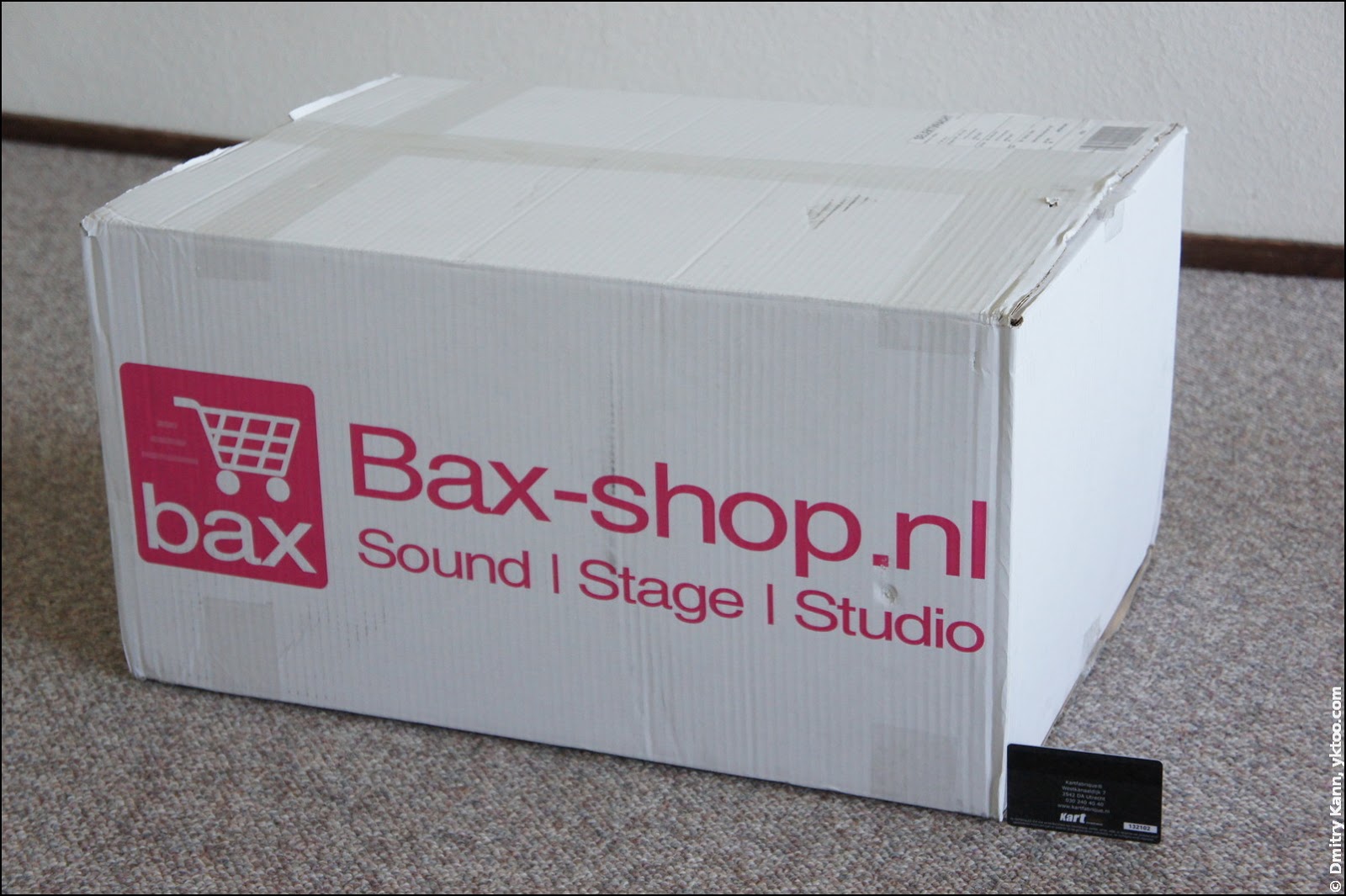
A smaller box, all wrapped in bubble-pack, was found inside.
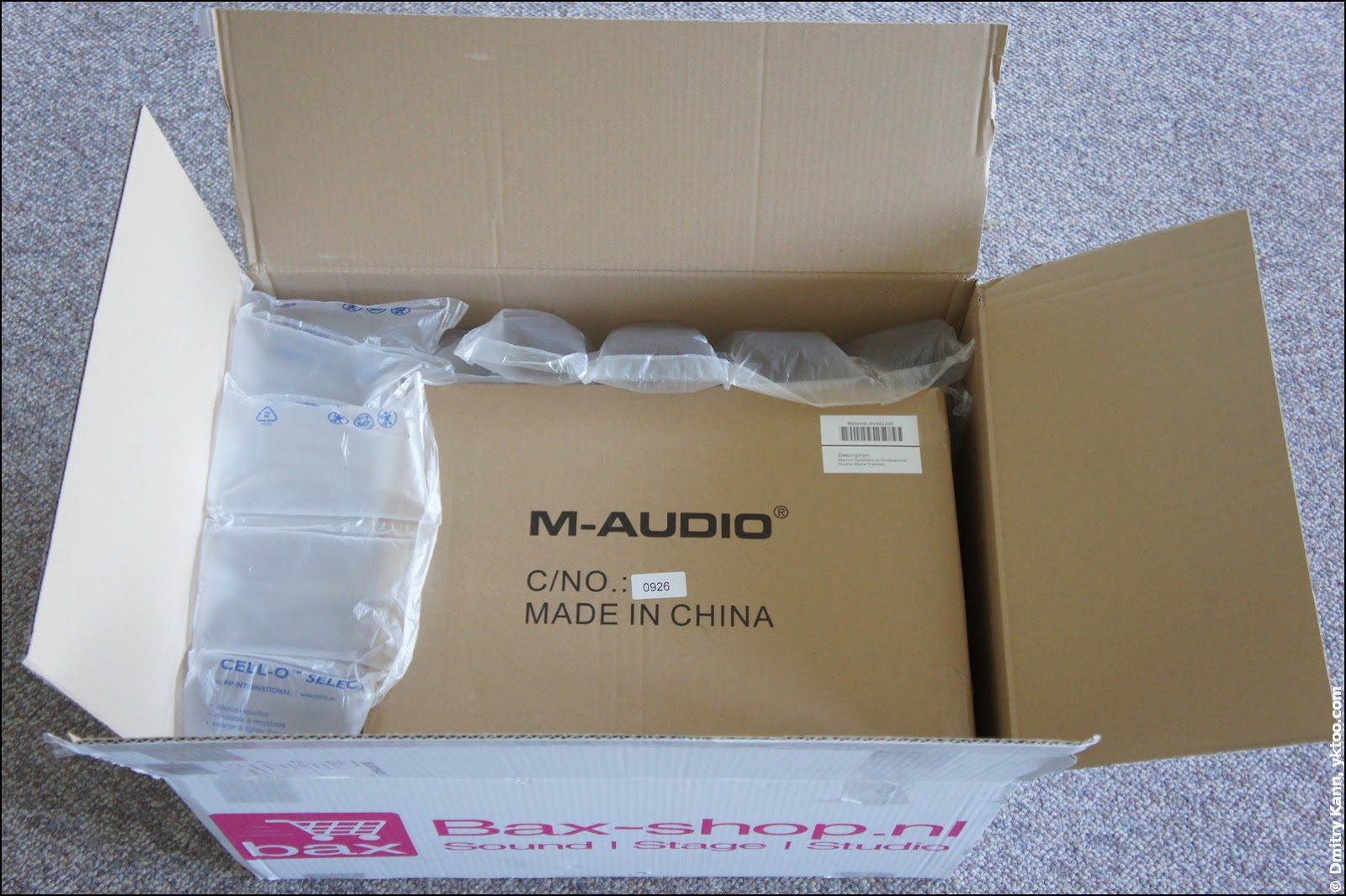
This second box is also plain. And the store’s sticker for real fans:
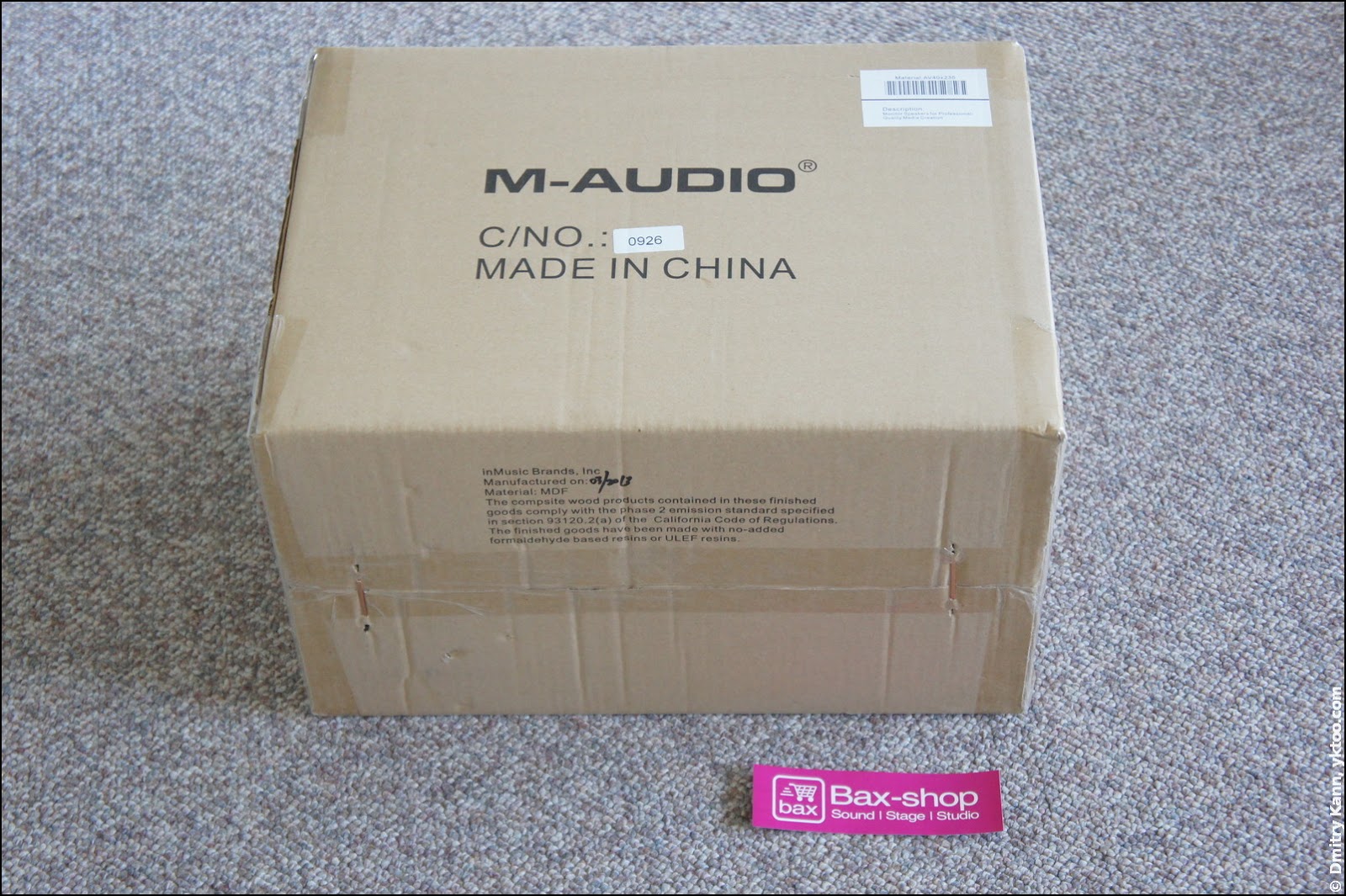
The third box is the real one:
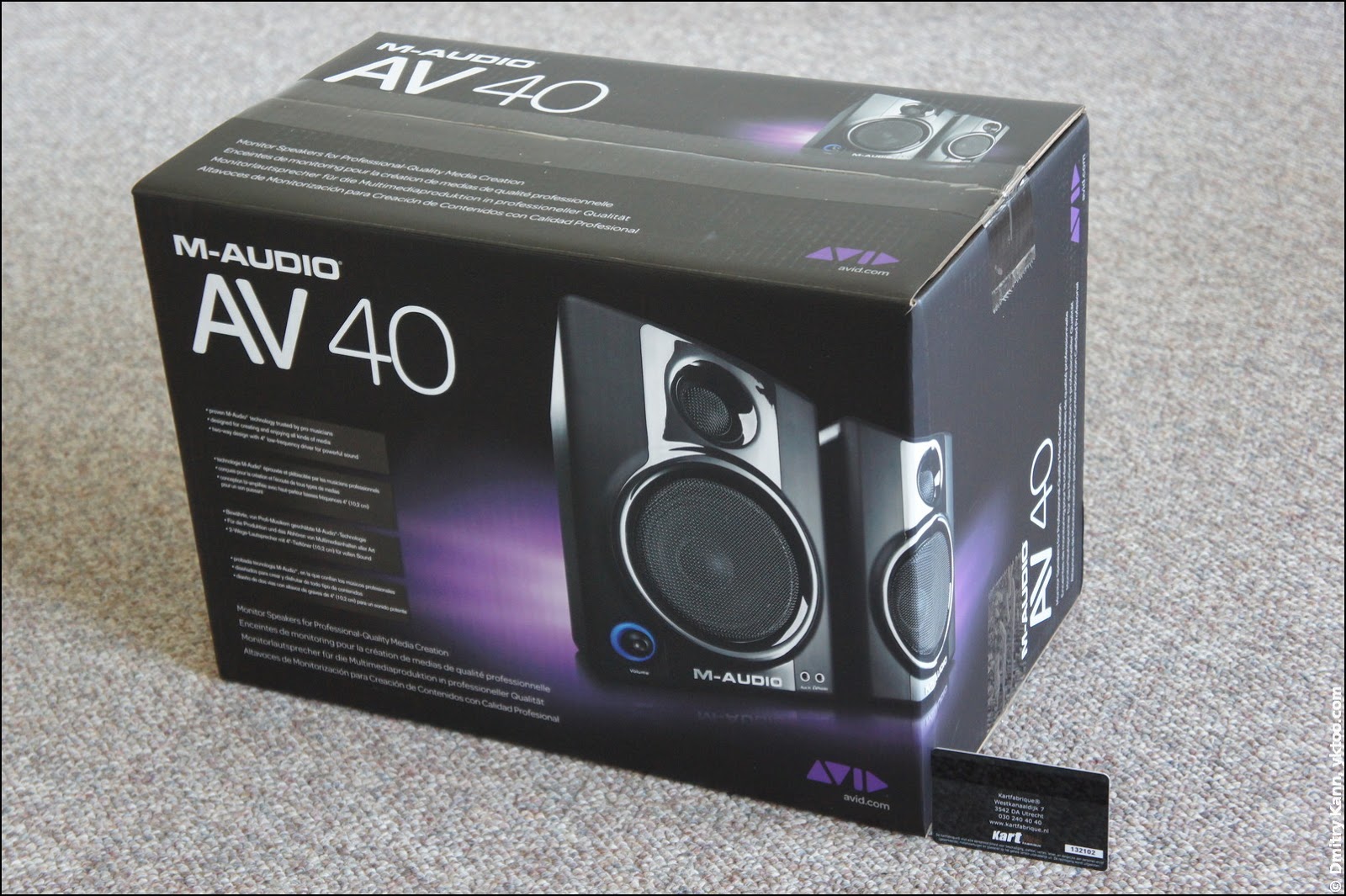
Everything is thoroughly wrapped and packed:
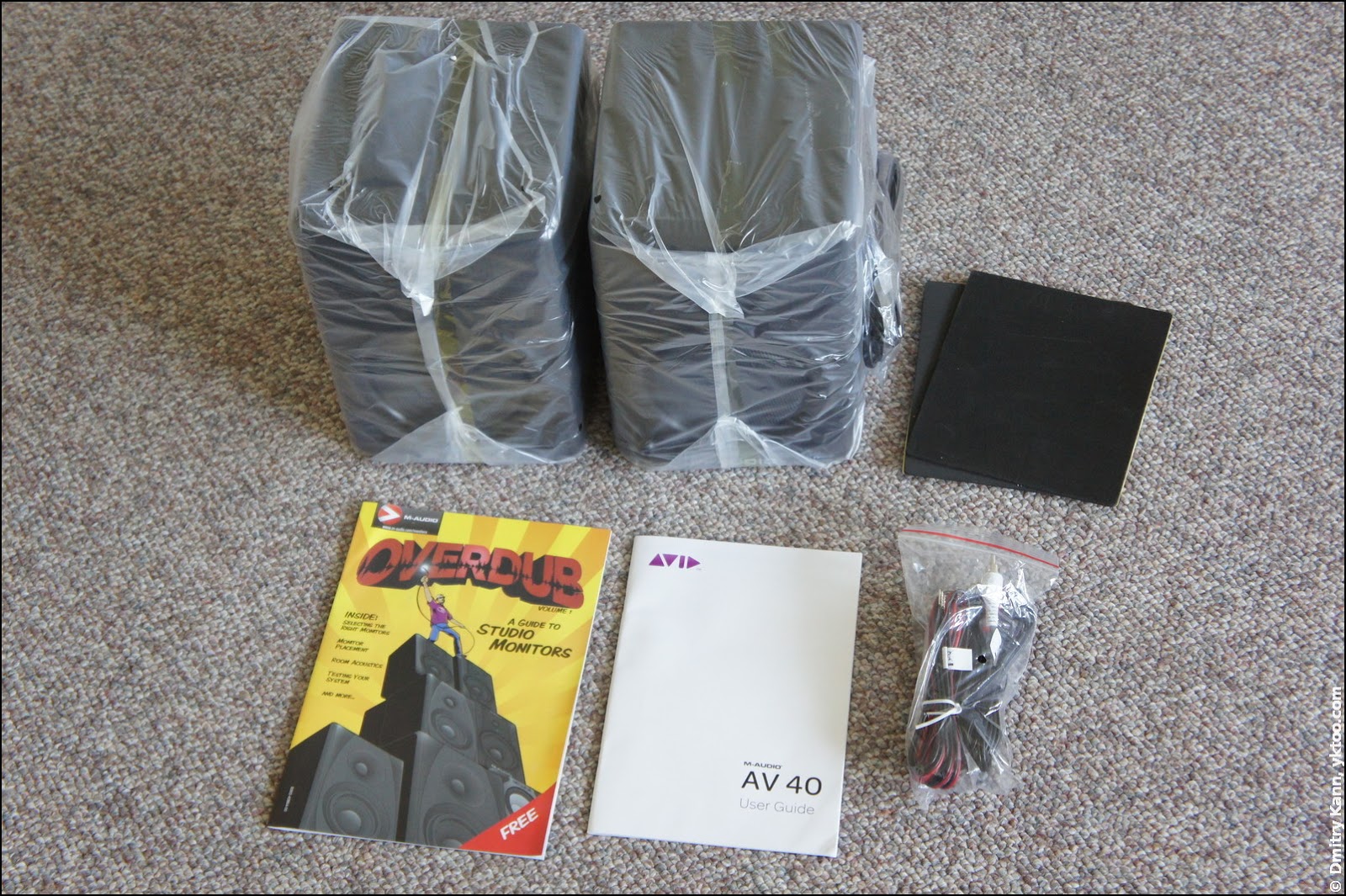
The package contents: two speakers, two sticky foam pads for underneath the speakers, three cables (jack-jack, jack-RCA and a wire to connect speakers to each other), user’s manual and a guide to studio monitors:
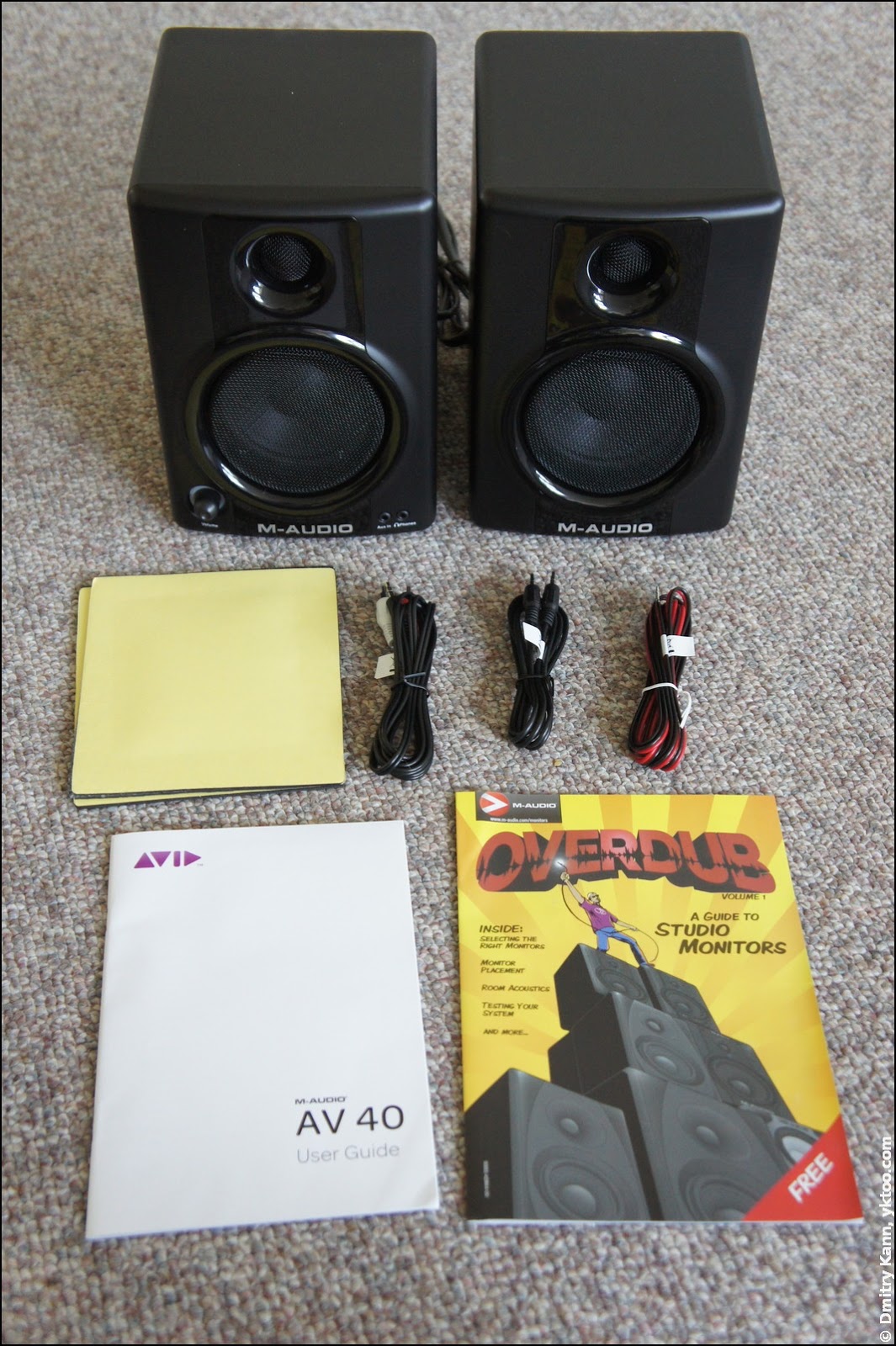
The left speaker is the main one as it contains a power amplifier. The front side contains LF and HF drivers (or tweeter and woofer, respectively), a volume knob with a blue power LED ring around it, auxiliary input (Aux In) and headphone output, both are 3½ mm jacks.
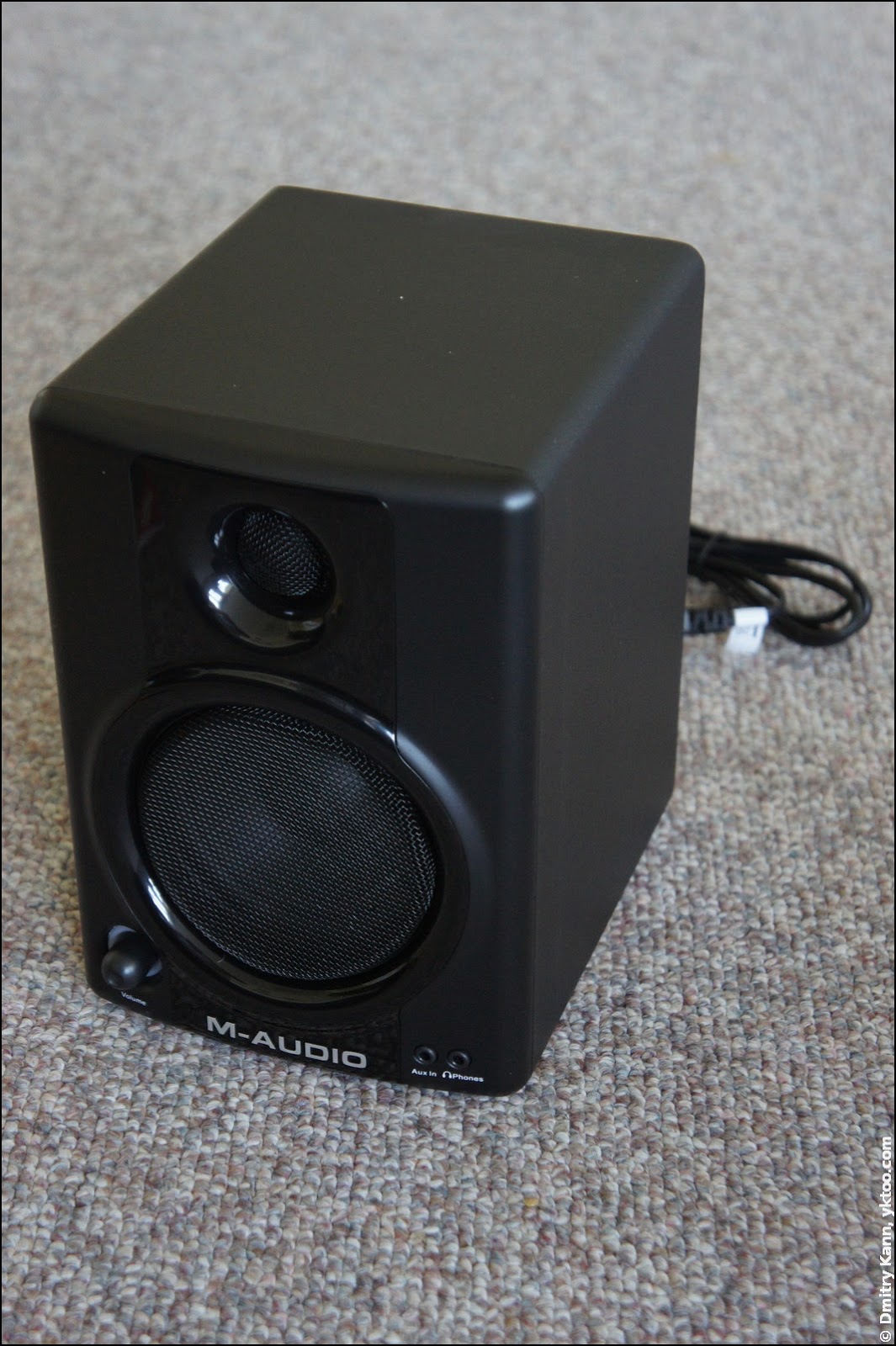
The left speaker, rear view: bass reflex port, balanced (TRS) input (6.3 mm jacks), which you only find on studio equipment, RCA stereo input, spring-clip terminals for the right speaker, power switch and power cable:
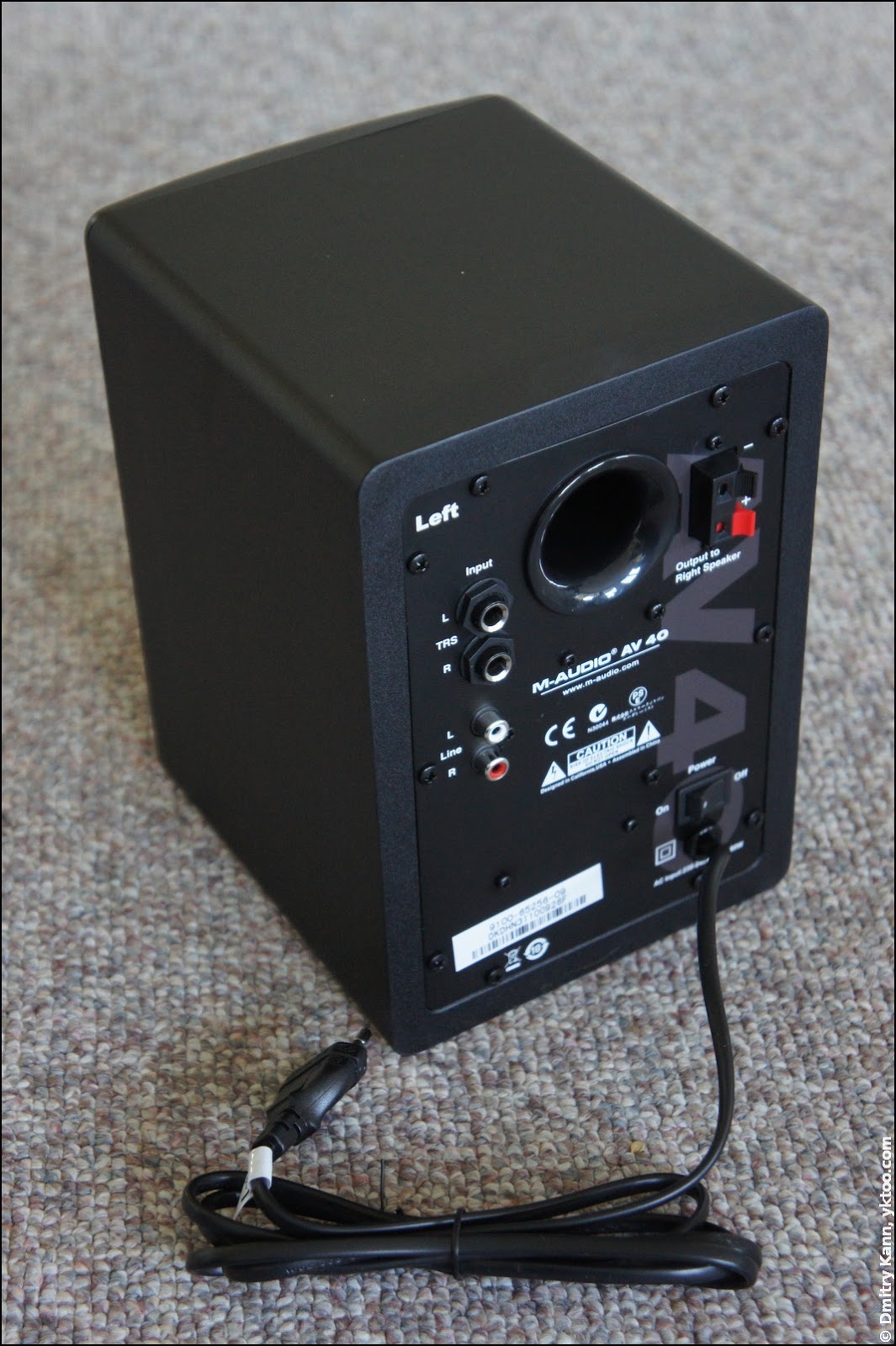
I don’t mind the power switch on the back. My speakers power up automatically when the PC is turned on, thanks to a master-slave power switch. What I find great is that the power adapter is built in, so no hassle with a separate AC adapter.
The right speaker, front view—just the two drivers:
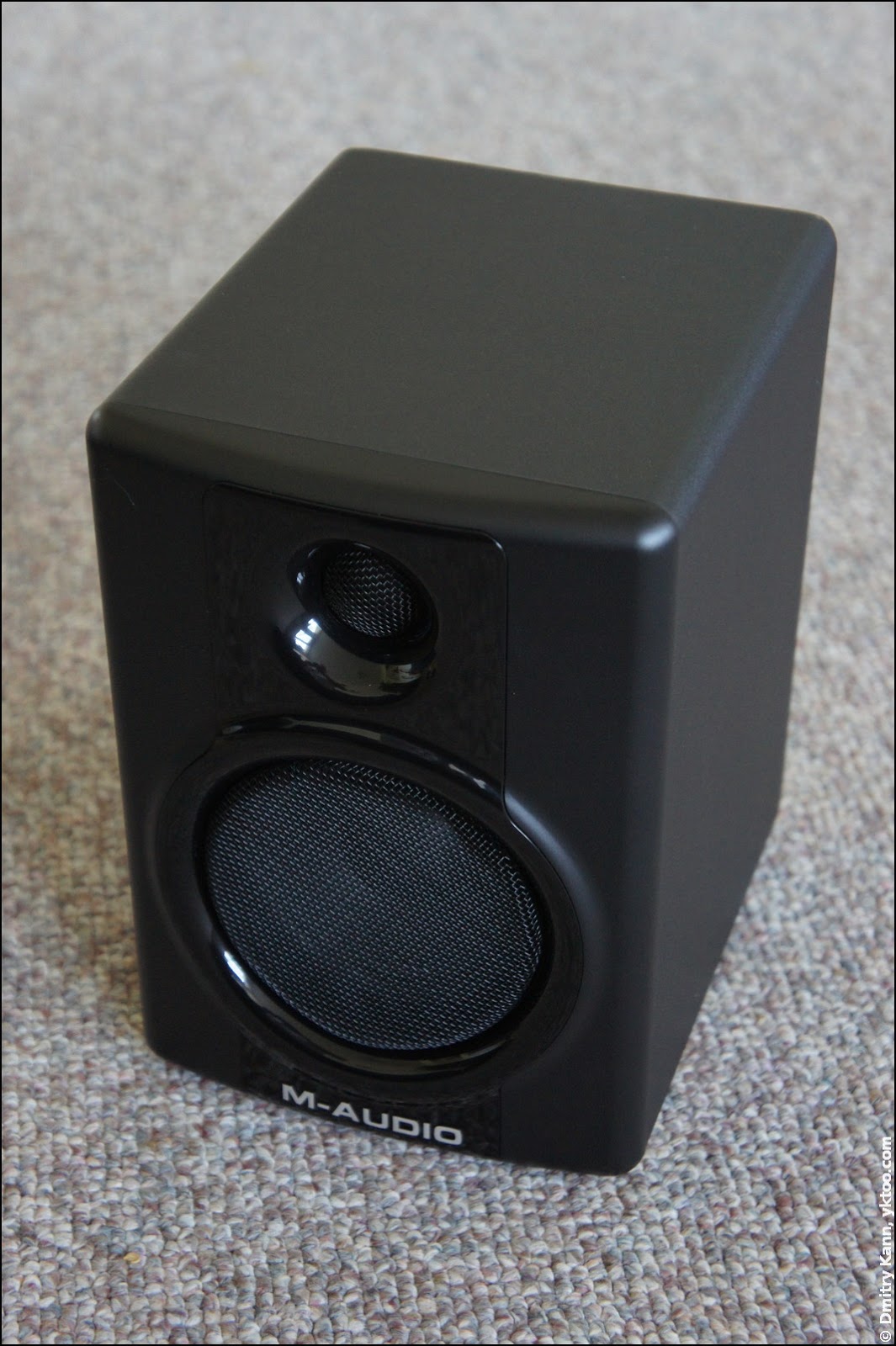
Rear view. Bass reflex port and terminals for the left speaker’s output:
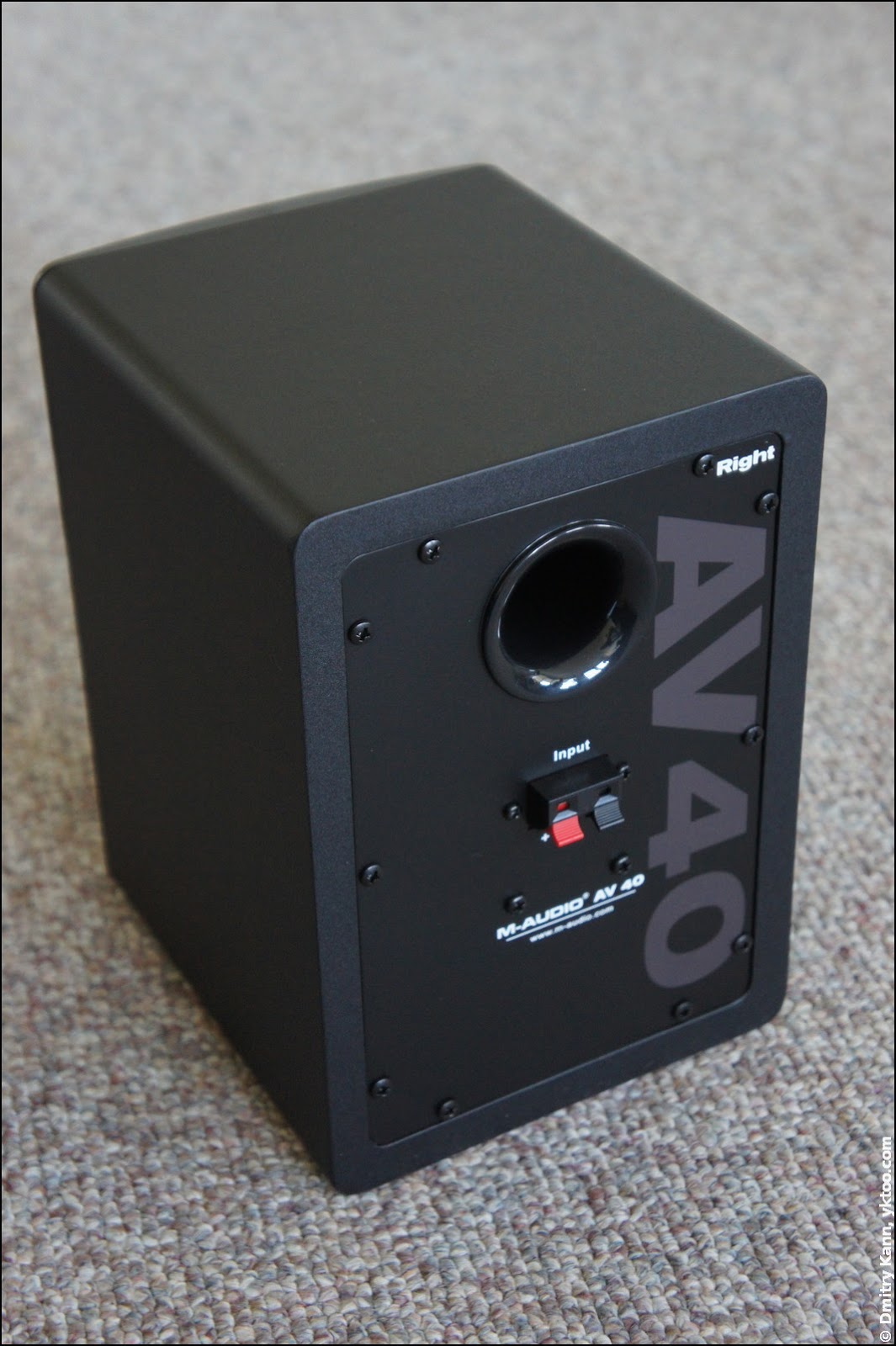
Connecting the speakers is a piece of cake. I used an external USB sound card Creative Xmod X-Fi, which has a big volume knob and a mute control on it. Here’s the final result (Creative X-Fi is on the left):
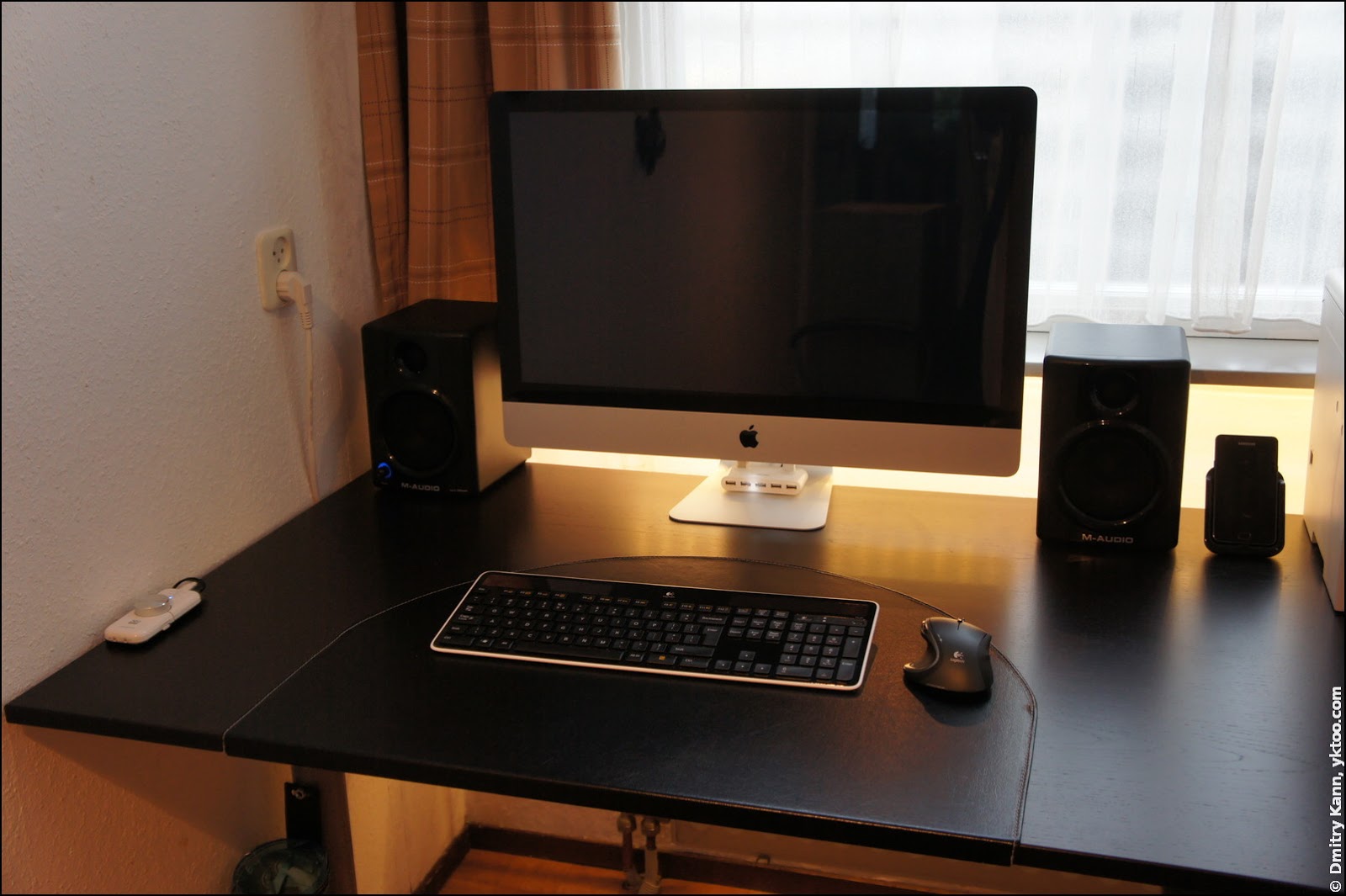
The included guide to studio monitors turned out to be very useful and interesting.
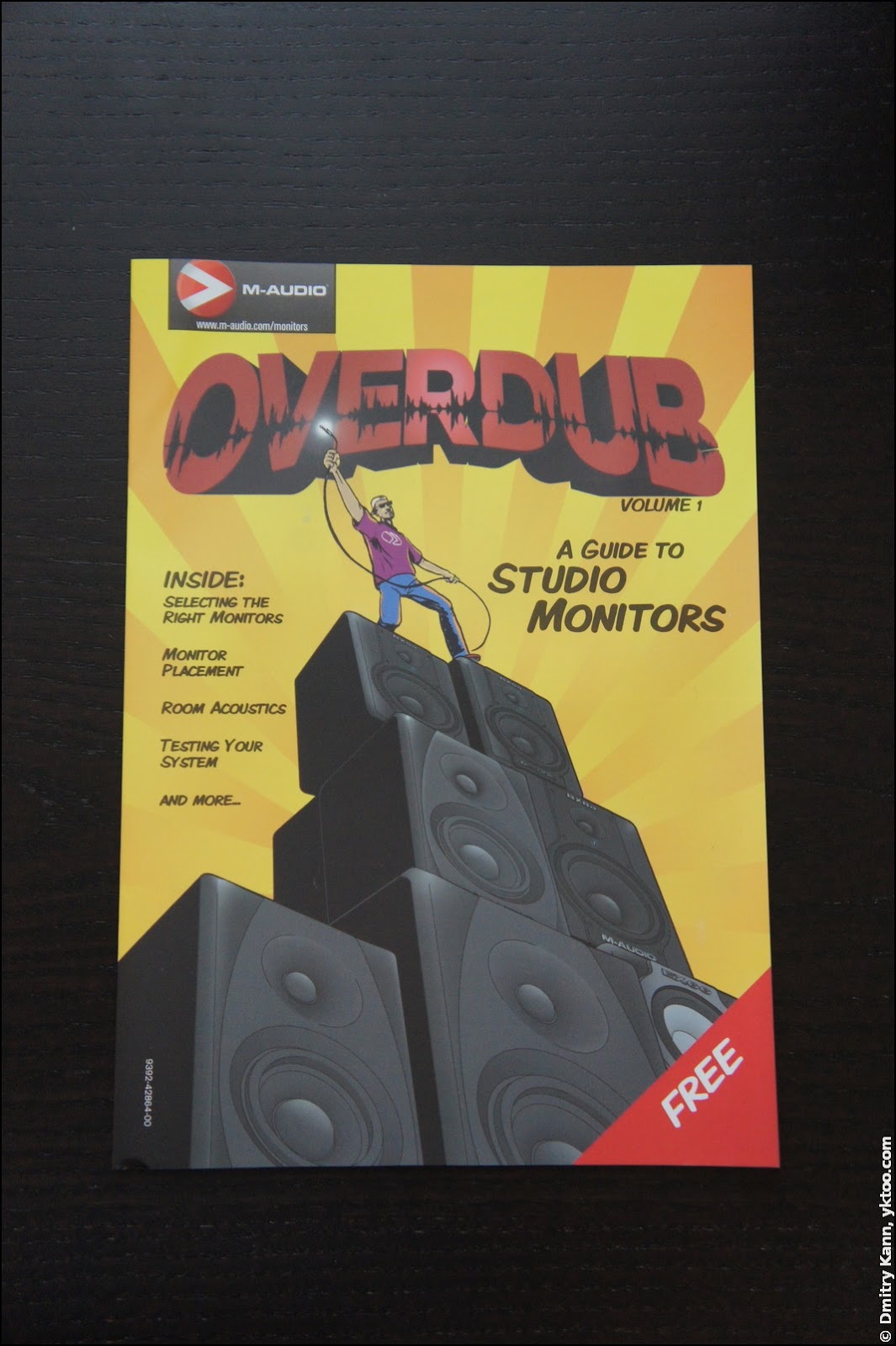
Surprisingly enough, there’s almost no M-Audio ads inside, but rather practical recommendations on placing monitor in the room, eliminating vibration interference etc.
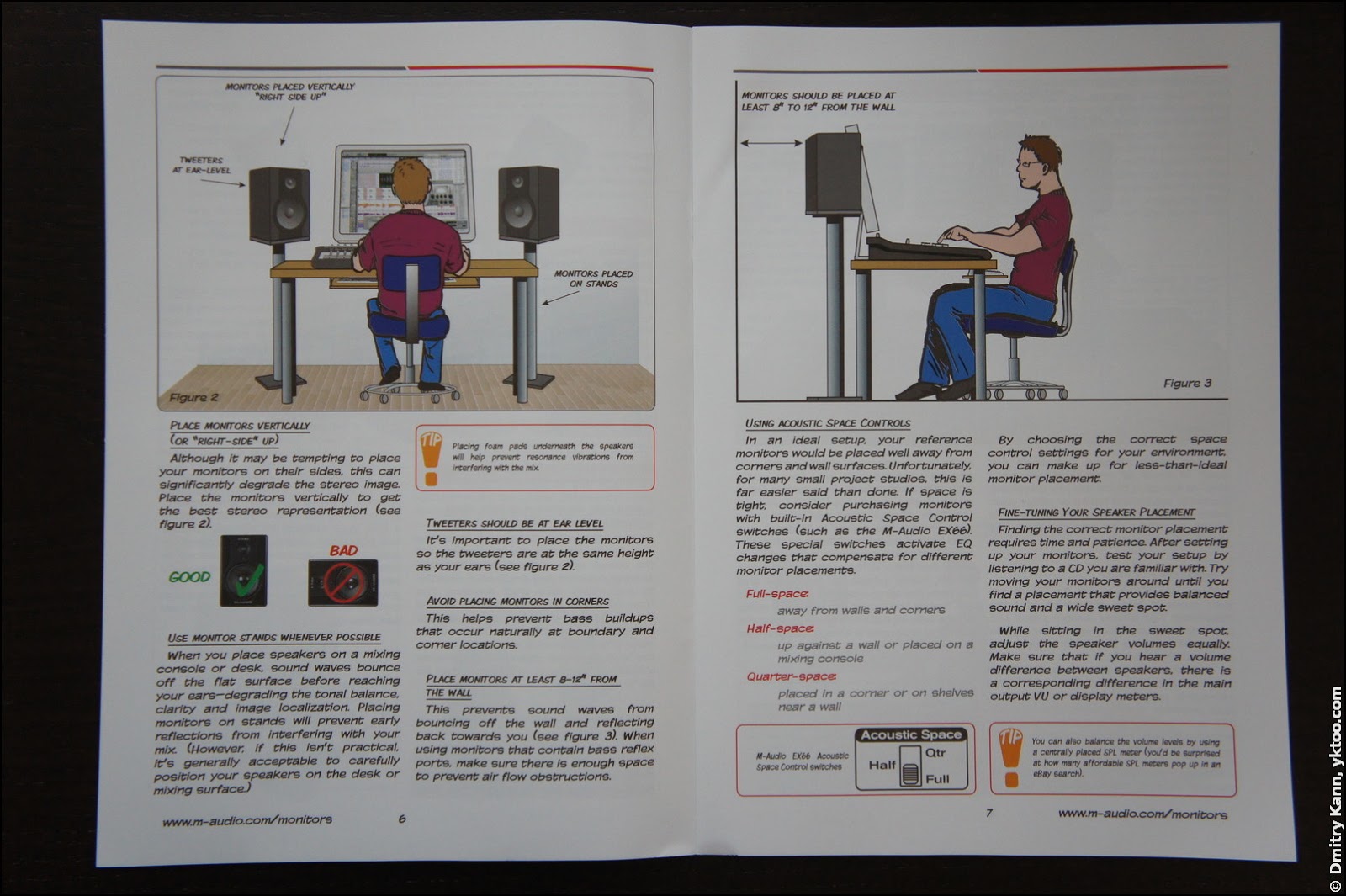
After I’ve finished it, it became clear to me that my setup cannot be perfect. One should use monitor stands, put them at least 8" away from the wall, level it with the listener’s ears in a perfect triangle an so on.
Nonetheless, I’m pretty satisfied with the result. They sound great on any kind of music: classical, rock, jazz, electronic. Very robust and no nonsense in the manual. There’s even a block diagram and a frequency response curve inside.
Update: you can find more or less the same info on M-Audio website.
Specifications
| Parameter | Value |
|---|---|
| LF Driver | 4", polypropylene-coated, magnetically shielded |
| HF Driver | 1", magnetically shielded silk cone tweeter |
| Frequency response | 85 Hz — 20 kHz |
| Crossover frequency | 2.7 kHz |
| RMS SPL | 101.5 dB @ 1 m |
| Signal/noise ratio | < 90 dB (A-weighted) |
| Dynamic power | 15 watts continuous, per channel |
| Input impedance | 20 kOhm balanced, 10 kOhm unbalanced |
| Input sensitivity | 100 mV pink noise input produces 90 dBA output SPL at 1 meter with volume control at maximum |
| Dimensions | 8.75" × 6" × 7.25" (22.2 × 15.2 × 18.4 cm) |
| Weight | 14 lbs. / 6.34 kg |
Conclusions
Pros
- Very clean, unsaturated, natural sound.
- Great frequency response (85 Hz — 20 kHz) without a subwoofer.
- Compact and powerful at the same time (15 watts continuous is more than you’ll need on your desktop).
- Built-in power supply.
- Auxiliary input and headphone output on the front side.
- Balanced input to hook up with a mixing console.
- A famous make and, consequently, high quality assembly.
- Good price for the above.
Cons
- A somewhat plain look.
- Power switch is at the rear side which may not seem handy.
- No sound equalisation available (which is not an issue for studio monitors, but some people may need it).
See also: Tackling M-Audio Studiophile speaker power-off popping sound
 — world’s fastest URL shortener
— world’s fastest URL shortener
Comments